Any car fan worth his WD-40 has heard of the Japanese K-car phenomenon, but I bet only a select few know the subject inside-out. That doesn't include us either, but having swotted up on all things Kei, we’d like to impart some of what we’ve learned to you. We hope that its totally accurate and comprehensive, it was certainly fun to put together. Stay tuned for some prime examples of Kei cars and culture over the coming months (starting tomorrow), we hope you enjoy them.
The best cars are those that are borne out of necessity. The original VW Golf appeared in an era when the world was going through the energy crisis of the 1970s. the original Mini was launched as the nation's mindset changed from post-war austerity to the first shoots of a more modern age. So it was the case in Japan, and the birth of the Kei car.
What does Kei mean?
The term "Kei car" (or "K-car") is short for keijidōsha or "light motor car." A Kei car can be no longer than 11.15 feet long by 4.86-feet wide and must have an engine that displaces 660cc or less, making no more than 63 hp. Japanese motorists must pay an acquisition tax that's based on the purchase price of the car – so the more expensive a car, the higher the tax. A weight tax must also be paid at the time of purchase, so larger cars with big engines pay more tax. Then there's an annual tax (similar to UK Japan
And yellow numbers on black background for commercial use:
And yellow numbers on black background for commercial use:
Because regulations only restrict physical size and engine displacement (and more recently outright power), manufacturers are still free to equip their Kei as luxuriously they want. Consequently, Kei cars are often available with turbocharged engines, automatic and CVT gearboxes, front, rear and four-wheel drive, hybrid drivetrains, air conditioning, GPS and many other goodies.
At this point in time, Daihatsu, Honda, Mitsubishi, Subaru, and Suzuki all manufacture Kei cars, while Nissan sells badge-engineered Mitsubishi and Suzuki models, and Mazda also offers badge-engineered Suzuki models. Starting in 2011 Toyota
Smart offered a Kei version of its Fortwo in 2001, called the Smart K, with modifications to wheel size and track width to conform to Kei standards. However it suffered from poor sales and was withdrawn from the market in 2004.
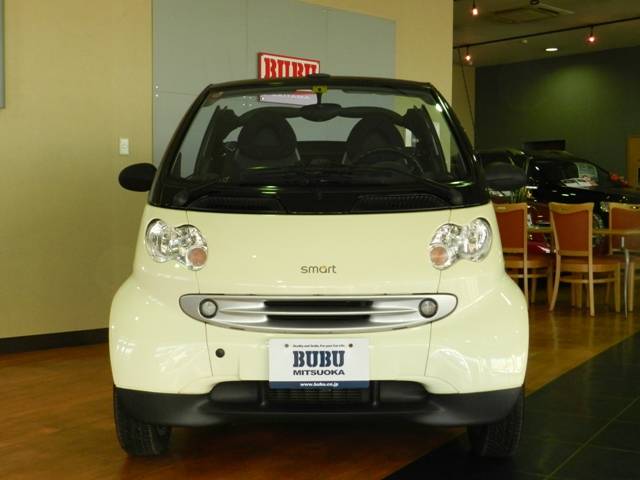 |
| Don't be confused by the 'Mitsuoka' dealer plate; the familiar Smart FourTwo was a Kei Car (sold as the Smart K), being the only ever non-Japanese car to fulfill the Kei regulations. |
Origins of the Kei car
The idea of the Keijidōsha standards came about in the late 1940s, following the end of WWII. With the country in the midst of post-war rebuilding, the Japanese government agreed that increased mobility of people and goods were required to promote economic growth, at a time when most Japanese could not afford a full-sized car yet had enough to buy a motorcycle. To encourage companies to produce a cheap “national” car for the masses, July 1949 saw the introduction of the first Keijidōsha standards. These would offer tax breaks and ease of ownership over full-sized cars. Vehicles were to be a maximum of 280cm long and 100cm wide - an absolutely tiny size. For example, had it been produced by then, the single-occupant Peel P50 would have only been 1cm short of the maximum width restriction.
However, a generous 200cm height limit encouraged the production of light trucks and vans. Engines were limited to 150cc for 4-strokes and 100cc for 2-strokes.
By July 1950, the government decided these standards were somewhat unfeasible and upped the maximum width by 30cm (to 130cm) and the maximum length by 20cm (to 300cm). They also generously doubled the engine size restrictions - 300cc for 4-strokes and 200cc for 2-strokes.With still no demand to build cars, August 1951 upped the engine sizes once more - 360cc for 4-strokes and 240cc for 2-strokes. This was to be the first successful standard, with the introduction of Japan 's first true Kei-cars in 1953, with the Auto Sandal and Jama NJ
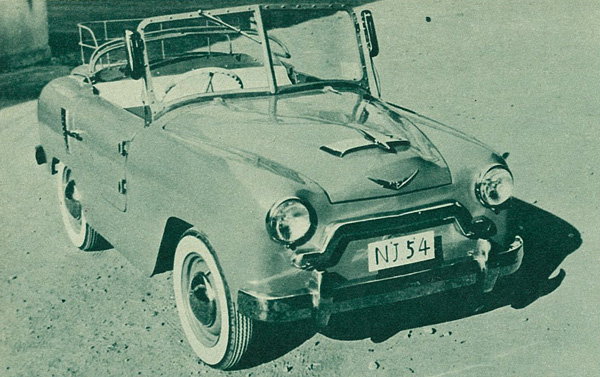 |
| 1953-1955 Jama NJ |
The 360 cc era
Although the Sandal and Jama were the first, it wasn't until the 1955 change to 360cc as the upper limit for two-strokes as well as four-strokes that the class really began to take off, with cars from Suzuki (Suzulight) and then Fuji heavy Industries producing their first car, the famed 1958 Subaru 360. These cars were finally able to fulfill people's need for basic transportation without being too severely compromised.
In 1955, the Japanese Ministry of International Trade and Industry also set forth goals to develop a new version of the "national car" that was larger than kei cars produced at the time. This goal influenced Japanese car manufacturers to determine how best to focus their product development efforts for the smaller kei cars, or the larger "national car".
 |
| 1955 Fuji Cabin Model 5A |
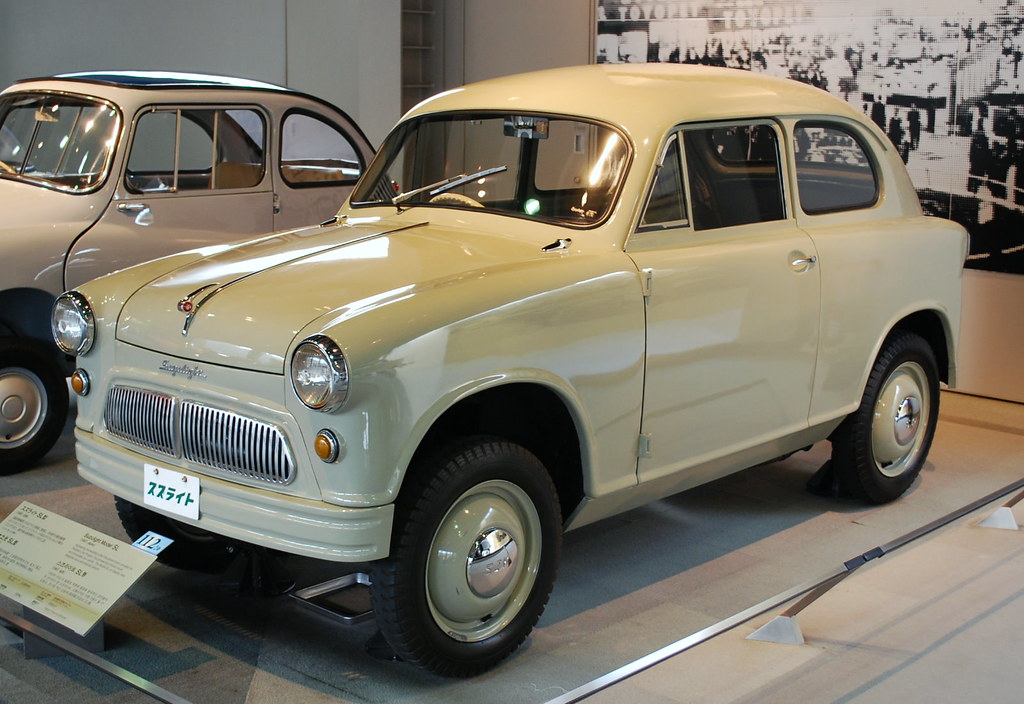 |
| 1955 Suzulight, the brand used by Suzuki to launch their first car |
Incidentally, until 31 December 1974, Kei cars used smaller number plates than 'normal' cars (230 x 125 mm). As of 1975, Kei cars used the standard Japanese plates (330 x 165 mm). To set them apart from regular (non-Kei) cars, the plates were now yellow and black rather than white and green.
The 550 cc era
The Kei car began to be beset on all side by growing problems; sales had been steadily declining, reaching a low of 150,000 passenger Kei cars in 1975, 80% less than the halcyon year of 1970. Many were beginning to doubt the continued existence of the Kei car, with not only the Honda and Mazda withdrawal but also even stricter emissions standards that were first introduced in 1973. These tough standards were part of a staggered programme; after the initial 1973 stage further stages came in ’75, 76 & 1978. Meeting these emission rules proved problematic for Kei manufacturers to implement, particularly for Daihatsu and Suzuki who focused on two-stroke engines. Of the two, tiny Suzuki were worst off, with their entire production consisting of two-stroke-engined Kei cars, while Daihatsu on the other hand had both the engineering backing and powerful connections of parent company Toyota to aid them in meeting the new requirements.
All of the Kei manufacturers were clamouring for relaxation of the dimension conditions, claiming that the emissions standards could not be met with a 360 cc engine (although Subaru's SEEC-T equipped Rex proved it was possible), a larger engine size would be needed so therefore a wider engine bay, so tightly packaged were the cars. In the end, the Japanese legislature relented, increasing the overall length and width restrictions by 200 mm and 100 mm respectively. Engine size was increased to 550 cc, taking effect from January 1, 1976. Most manufacturers were surprised by the decision; having expected a 500 cc limit, they had already developed new engines to fit such restrictions. These new engines were quickly introduced, usually mounted within widened bodies of existing models. These interim versions, with displacements ranging between 443 and 490 cc, were developed to see if there was indeed a continued market for the Kei car while not dedicating a full development budget for a potentially loss-making model line.
As sales improved, the stop-gap cars only lasted for a model year or so but bought valuable time until the companies had had the time to develop bespoke 550cc engines. Only Daihatsu managed to avoid developing transitional engine versions which did not take full advantage of the new regulations. Kei car sales remained stagnant however; while combined passenger and commercial Kei car sales reached 700,000 for the first time since 1974, in a quickly growing market the small cars still lost market share. This trend continued until a low point of 25% market share in 1980, from which Kei cars sales started to rise, due in part to more disposable income because of unprecedented economic prosperity in Japan, leading to a 'bubble' economy (in which real estate and stock prices were greatly inflated) later on in the decade.
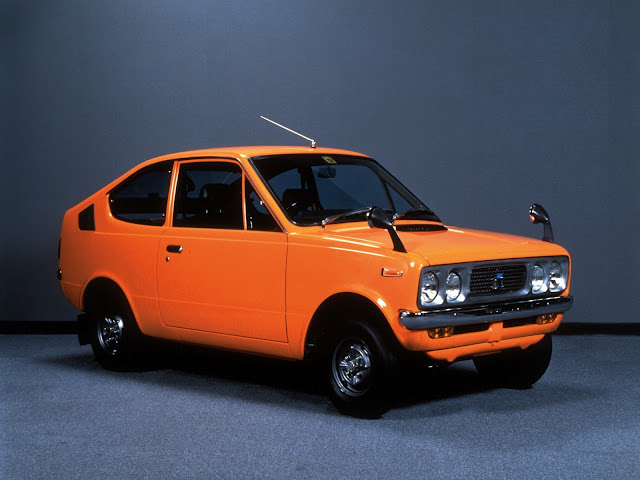 |
| 1971 Mitsubishi Minica Skipper |
 |
| 1979 Subaru Rex 550 |
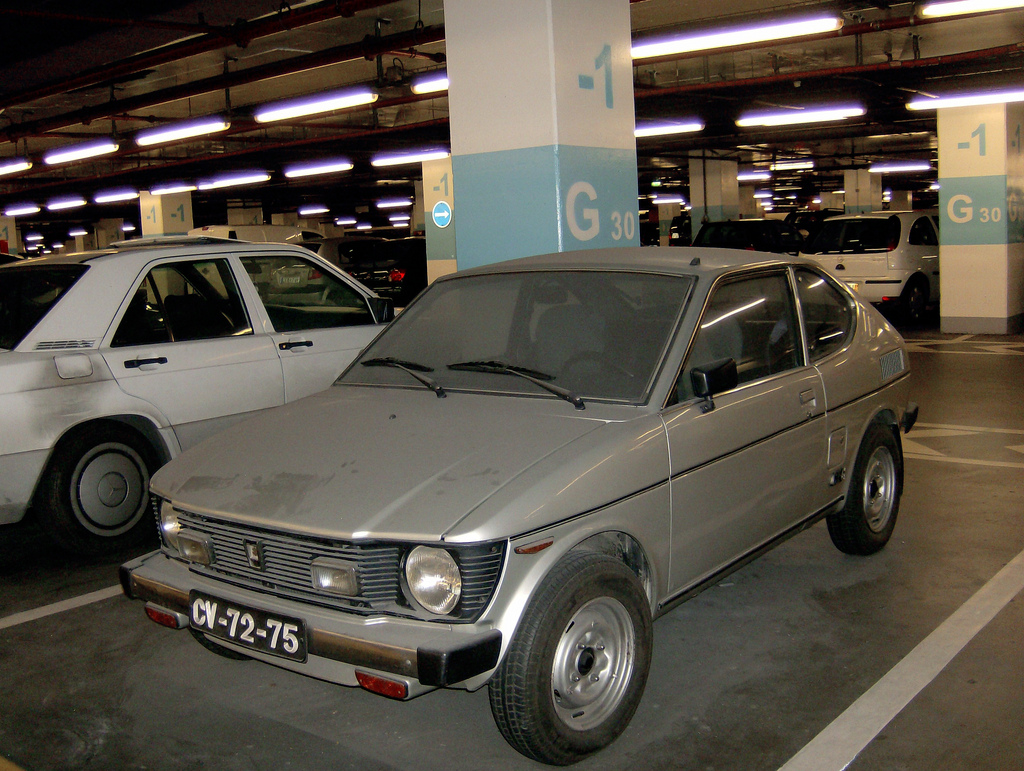 |
| 1979 Suzuki Cervo CX-G, better known in the UK as the SC100 Wizzkid |
Vans & Trucks
A lot of Kei trucks (keitora) and microvans are used in Japan
The 660 cc era
In March 1990, after over 14 years of no rule changes, new standards were introduced. An extra 110 cc were now allowed in a slightly larger (10 cm longer) body shell. These changes came at a time when the economy was still on a roll from the late 80’s ‘bubble’, so all manufacturers quickly developed new models to capitalise on the market The only 550 cc model to continue to be available for a while was the Mitsubishi Minica Dangan, which was only upsized five months later. As a response to ever-increasing power, a limit of 63bhp was also added. 63bhp happened to be the highest outputs to have been reached at the time, but it is unknown if there are any other reasons as to how that number was arrived at.
The Kei sports car was also borne of this prosperity although a few sporty iterations such as the Fronte Coupé, Honda Z and Minica Skipper had appeared in the early seventies. Car such as the 1991 Honda Beat, the Suzuki Cappuccino of the same year and the 2002 Daihatsu Copen found fame overseas. The rarer Autozam AZ-1 of 1993, a Mazda brand, was converted to LHD and was a popular ‘grey’ export to North America . Suzuki also had an even rarer version of the Autozam, as it was actually designed and built by Suzuki, called the Cara.
 |
| 1991 Honda Beat |
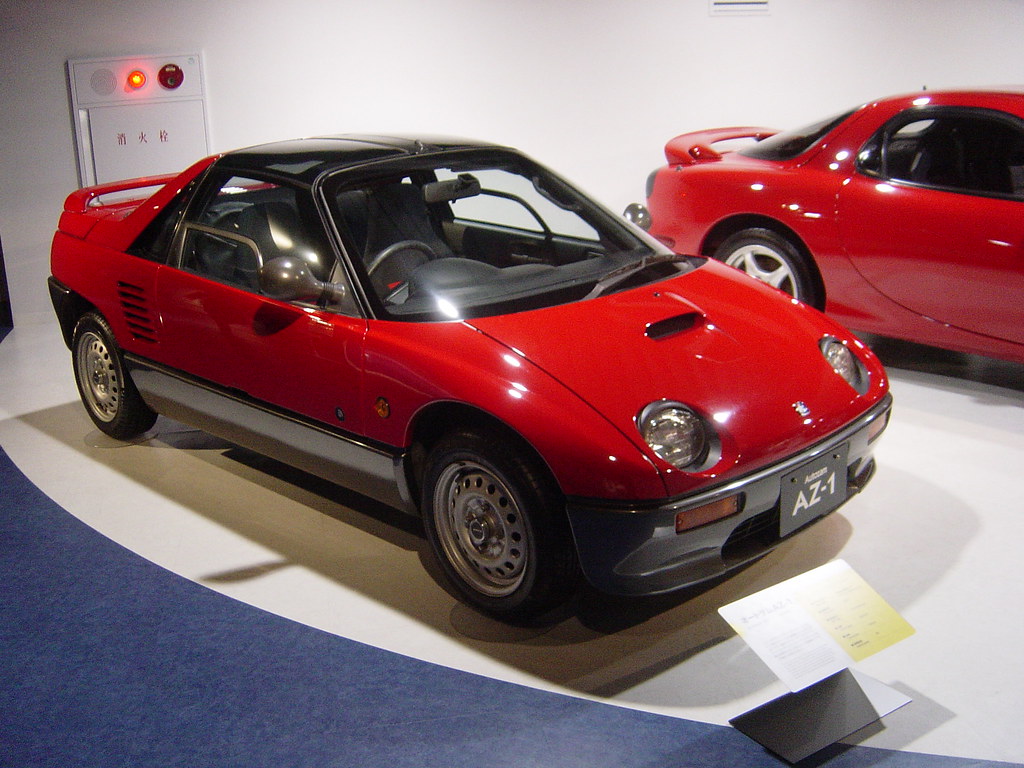 |
| 1992 Autozam AZ-1 |
However, the bubble effect could not last; the economy overheated and the good times came to an abrupt end as the Tokyo Stock Exchange crashed in 1990–92 and real estate prices peaked in 1991. Kei sales, as with the rest of the Japanese car market, took a hit but did slowly recover some ground, but not to the heady heights of the late 1980’s.
The Modern Era
October 1998 saw the rules tweaked; length went up slightly to 3.4m (11.2 ft) and width to1.48m (4.9 ft)
To help combat the increasing safety apparatus and control systems needed on a modern car. The Kei class is an ever-more popular one today, what with soaring fuel prices and tougher safety regulations. It can be argued that the Kei class’s influence will be one that is going to be felt more and more in the global car industry.
 |
| 2011 Honda N Box |
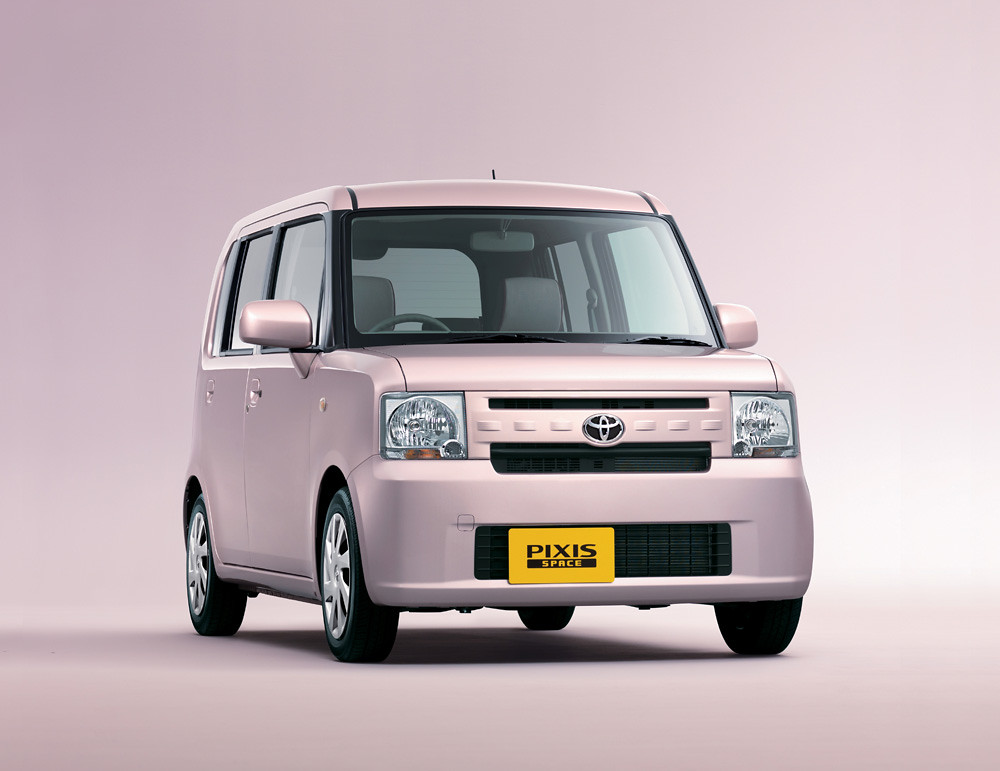 |
| Even Mighy Toyota are getting in on the act; this is the Pixis Space, effectively a rebadged Daihatsu Move Conte (Toyota own Daihatsu) |
With grateful thanks to Dan Hirst and all concerned for the raw info.



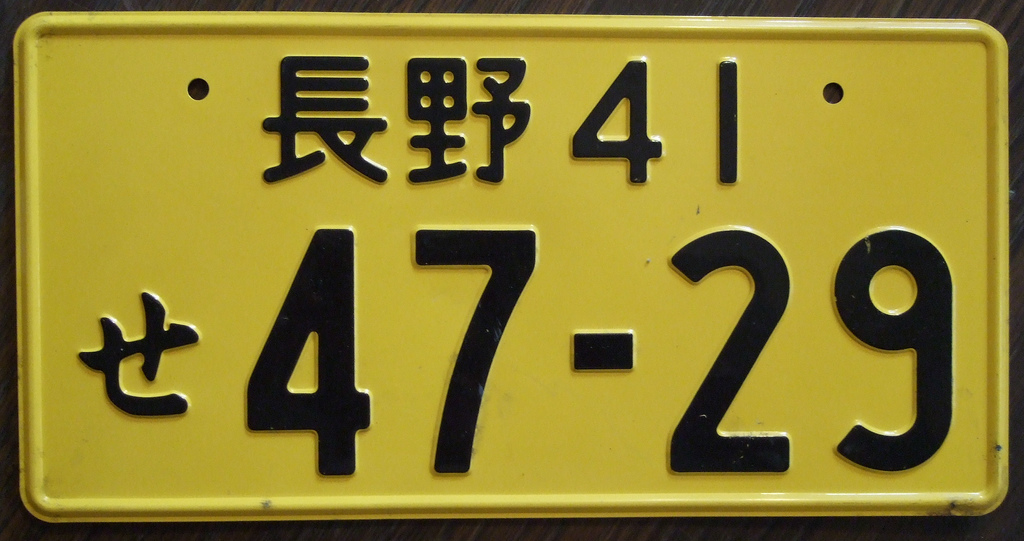



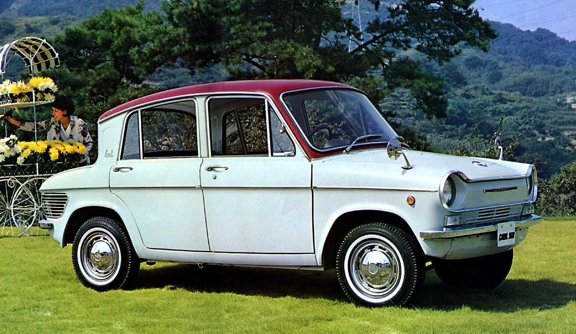
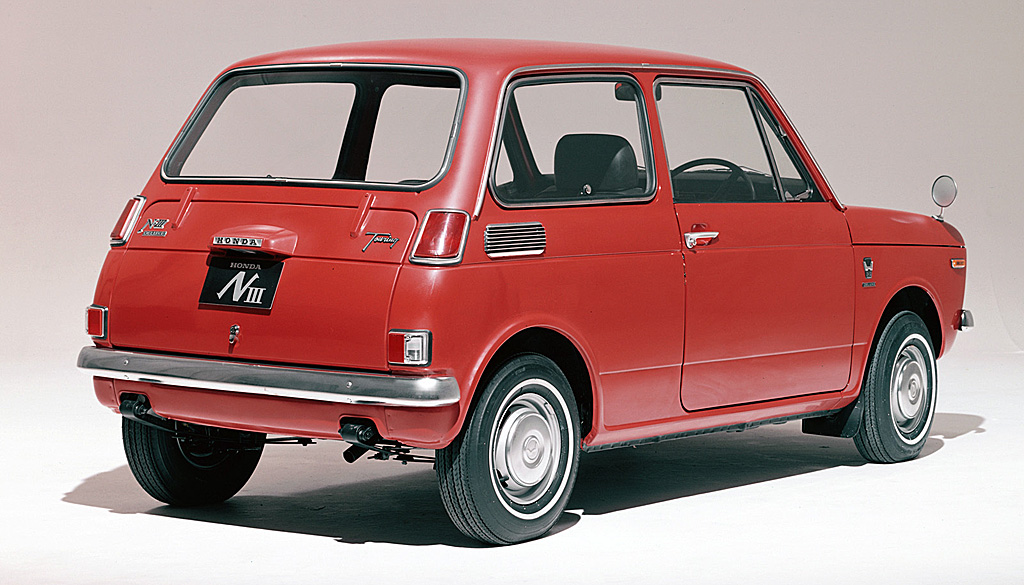
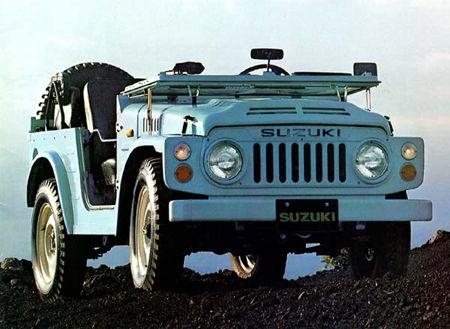

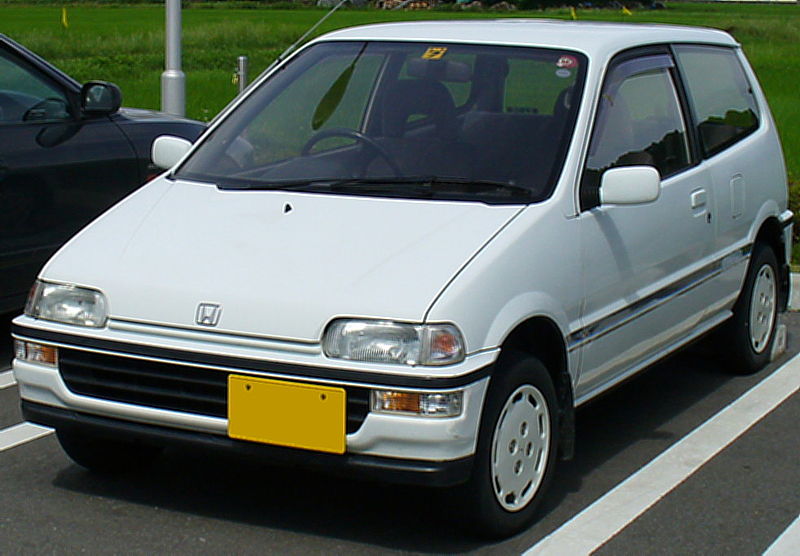
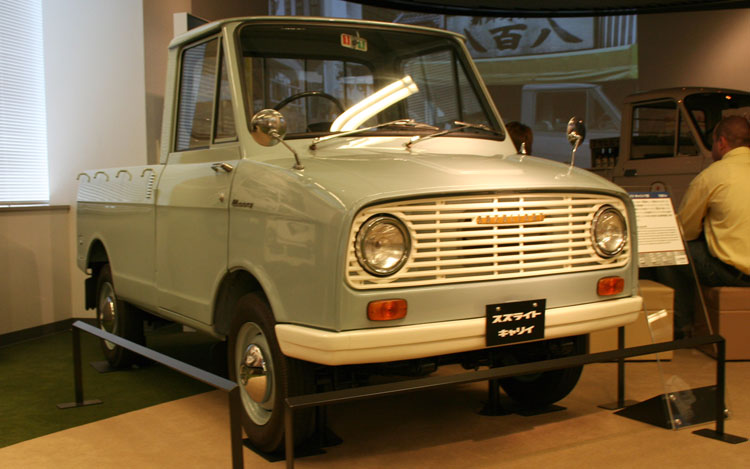



No comments:
Post a Comment